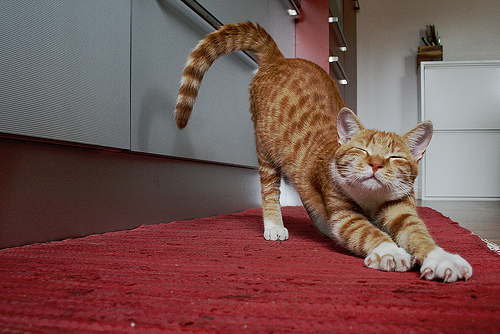
Intro to Sass
Part II
Download Class 2 Files:
Intro to Sass Class FilesMultiple Arguments
@mixin gradient($color1, $color2) {
background-image: linear-gradient($color1, $color2, $color1);
}Default Arguments
@mixin gradient($color1: #fff, $color2: #666) {
background-image: linear-gradient($color1, $color2, $color1);
}Interpolation
@mixin rotate($degree, $position) {
transform: rotate(#{$degree}deg);
transform-origin: $position;
}$type: 'large';
.button--#{$type} {
height: 100px;
}$sidebar-width: 250px;
.main-content {
width: calc(100% - #{$sidebar-width});
}@extend
%headline {
font-size: 2em;
font-weight: bold;
}
.lead-story-headline {
@extend %headline;
text-decoration: underline;
text-transform: uppercase;
}Let's Develop It
- Create new mixins using the following:
- Multiple arguments
- Default arguments
- Interpolation
- @extend to include common styles
- Use these mix-ins in your styles.scss file
- Compile to CSS and refresh your index page to see your changes
Sprites
Sprite Mixins
If you set up your Photoshop sprite to use grid lines, you can use Sass to easily position your sprite image without lots of trial and error.
@mixin sprite-position($x:0, $y:0) {
$gridSize: -32px;
$offsetX: $x * $gridSize;
$offsetY: $y * $gridSize;
background-position: $offsetX $offsetY;
}
@mixin sprite-image($file, $x:0, $y:0) {
background-image: url("../../images/icons/#{$file}");
@include sprite-position($x, $y);
}Media Queries
@media blocks do not need to be declared at the root level of the stylesheet, which helps keep them in sync with the elements they're modifying.
body {
article {
p {
font-size: 100%;
color: black;
padding: 10px;
@media (max-width: 768px) {
font-size: 150%; // use larger text for smaller screens
}
}
}
}Media Queries
Compiled CSS:
body article p {
font-size: 100%;
color: black;
padding: 10px;
}
@media (max-width: 768px) {
body article p {
font-size: 150%;
}
}Let's Develop It
- Add icons and media queries:
- Add icons to the footer or header
- Change the styles to fit different screen sizes
- Add these new styles to your styles.scss file
- Compile to CSS and refresh your index page to see your changes
Break Time!
Stand up and stretch - we'll resume in 5 minutes

Conditionals
@if, @else if, and @else
@mixin opacity($value: 0.5) {
@if $value == transparent {
opacity: 0;
} @else if $value == opaque {
opacity: 1;
} @else {
opacity: $value;
}
}
@include opacity(transparent);
For Loops
Sass code:
@for $i from 1 through 3 {
.column-#{$i} { width: 2em * $i; }
}
CSS output:
.column-1 {
width: 2em;
}
.column-2 {
width: 4em;
}
.column-3 {
width: 6em;
}Let's Develop It
- Use loops to make columns that fit within the layout or add links to the footer nav.
- Experiment with math in your loop's styles - change the width, padding, and even the font-size
@for $i from 1 through 3 {
.column-#{$i} { width: 2em * $i; }
}
@each
Loops through a list of items and creates styles for each item in the list
Sass code:
@each $icon in youtube, twitter, facebook {
.icon-$icon {
background-image: url('#{$icon}.png');
}
}
CSS output:
.icon-youtube {
background: url('youtube.png');
}
.icon-twitter {
background: url('twitter.png');
}
.icon-facebook {
background: url('facebook.png');
}Let's Develop It
- Create background image styles for each article
- Try Subtle Patterns for images to use
- Write these background styles with @each and a list
- Bonus: style the social media icons using @each and @if logic
@each $woman in ada, grace, frances, barbara, anita, maria {
.#{$woman}-bg {
background-image: url('images/#{$woman}.png');
}
}Advanced Functions
- This is an example of the index() function, but there are many other functions you can use.
- Sass function documentation
$elements: project-covers, user-tooltip, sorting-bar, modals, navigation;
.user-tooltip {
z-index: index($elements, user-tooltip);
} Advanced Functions
This is an even more advanced example combining a custom function, lists, variables, and error handling.
@function z($list, $element) {
$z-index: index($list, $element);
@if $z-index {
@return $z-index;
}
@warn 'There is no item "#{$element}" in this list; choose one of: #{$list}';
@return null;
}